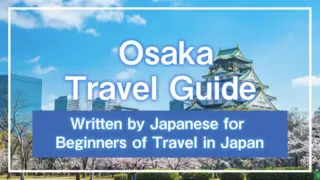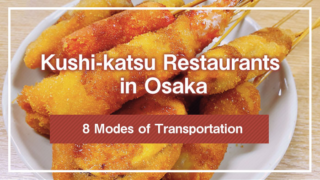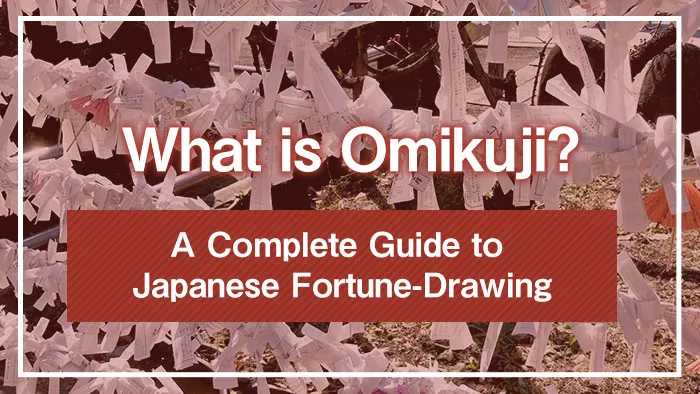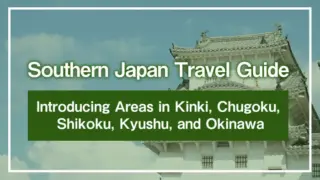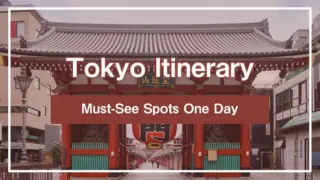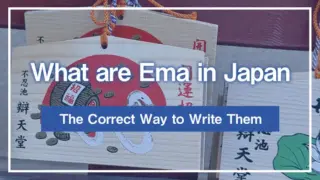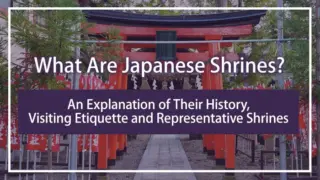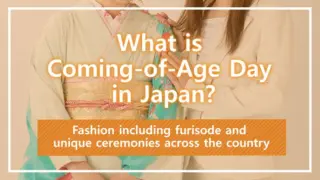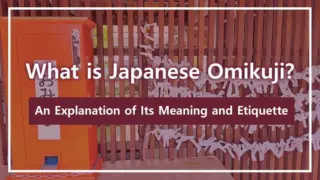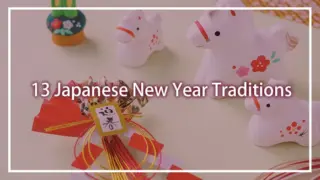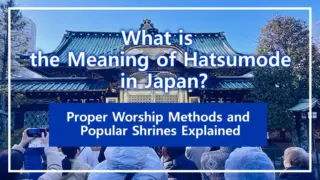“Omikuji” is a uniquely Japanese custom where visitors can divine their fortune at shrines and temples. Through messages written on paper, people can feel a sense of luck and hope. Omikuji has become popular among international tourists visiting Japan.
This article introduces the meaning and history of omikuji, how to draw one, how to interpret results, and even showcases cute animal and ceramic-themed omikuji. It’s recommended for those who want a cultural experience during their trip or are looking for a truly Japanese souvenir.
1. What is Japanese Omikuji?
Source:白山神社
Omikuji is a “fortune slip” with your destiny written on it. These fortunes are placed at sacred locations like Japanese shrines and temples. While most commonly found as small pieces of paper, there are various types of omikuji throughout the country. The typical price for omikuji ranges from 100-300 yen.
The content of omikuji includes your overall fortune, such as “Great Blessing” or “Medium Blessing,” along with information about money luck, work fortune, love, travel, health, and more. Some shrines and temples offer specialized omikuji that focus on specific fortunes, like “Love Omikuji.”
You can draw omikuji year-round when visiting shrines and temples. However, omikuji are most popular during New Year’s. Many Japanese visit shrines for Hatsumode (first shrine visit of the year) and draw omikuji to divine their fortune for the coming year.
Omikuji is a cultural tradition that originated in ancient China. It was introduced to Japan during the Heian period and gradually spread during the Warring States period through the Edo period. While modern omikuji are used to divine personal fortune, they were initially used for important political decisions.
2. How to Draw Omikuji
Source:氷室神社
Many shrines and temples have dedicated omikuji corners. Drawing omikuji is very simple, so please try drawing one when visiting a shrine or temple.
2-1. Pray at a Shrine or Temple
Omikuji is an answer to the wish you pray for during your visit.When you arrive at a shrine or temple, complete your worship before drawing omikuji. The worship method differs between shrines and temples.
When you arrive at a shrine, bow slightly in front of the torii gate. Since the center of the path is the passageway for deities, avoid walking in the center. At the chozuya (purification fountain), hold the ladle and wash your left hand, right hand, and mouth in that order, then rinse your left hand again. Hold the ladle upright with both hands, let water flow down the handle, and return it to its original position.
When you reach the offering box, bow slightly and step forward, then place your offering. If there’s a bell, ring it gently.Bow deeply twice, clap twice, and offer your prayers. Finally, bow deeply once more to complete the ritual.
The entrance to a temple is called the sanmon (mountain gate). When you arrive at the sanmon, quietly put your hands together in front of your chest (gassho) and bow. The procedure at the chozuya is the same as at a shrine. When you reach the main hall, quietly place your offering. Stand up straight, put your hands together, and bow.
2-2. Go to the Omikuji Corner
After completing your prayers, head to the omikuji corner. Place money in the offering box and draw your omikuji.
The traditional omikuji method involves shaking a wooden cylinder filled with sticks. When you shake the cylinder, one stick will come out with a number written on it. In front of you will be numbered drawers, so take one piece of paper (omikuji) from the corresponding drawer. If staff are present, they will exchange the stick for your omikuji.
A simpler method where you reach into a box to draw out an omikuji is also common. Some facilities even have omikuji vending machines. With this method, you insert money and automatically receive an omikuji.
2-3. Receive Your Omikuji Result
Omikuji contain written fortunes. The fortune rankings and their meanings are as follows:
Daikichi (Great Blessing): The highest fortune.
Kichi (Blessing): Good fortune.
Chukichi (Medium Blessing): Moderately good fortune.
Shokichi (Small Blessing): Slightly good fortune.
Hankichi (Half Blessing): Half fortunate, half uncertain.
Suekichi (Future Blessing): Not good now, but will improve toward good fortune.
Sueshokichi (Future Small Blessing): The future will become moderately good.
Kyo (Curse): Bad fortune.
Daikyo (Great Curse): Very bad fortune.
Some places may have “Daidaikichi” above Daikichi, or may not include any Kyo fortunes at all.
3. What Should You Do with Your Omikuji After Drawing It?
Source:氷室神社
After drawing your omikuji, you can either take it home or tie it at the shrine or temple. Regardless of whether your fortune is good or bad, you can choose either method.
Many shrines and temples provide places to tie omikuji or designated trees. When tying your omikuji, be sure to tie it at the designated location. Tying omikuji has the meaning of “tying a connection with the deity.” While you can tie omikuji regardless of the fortune, people generally tie up unwanted bad fortunes.
If you take your omikuji home, carry it in your bag or wallet like a charm, or carefully store it in a drawer. Keep the omikuji you take home for at least the remainder of the year. When you want to dispose of an omikuji, it’s preferable to return it to a shrine or temple. While it can be disposed of as trash, try to do so respectfully, such as by placing it in a bag.
4. Unique Omikuji in Japan
Source:白山神社
While most omikuji are small pieces of paper, there are also ornaments and charms throughout Japan. Ornaments and charms can be taken home as souvenirs regardless of the fortune. Here, we’ll introduce unique omikuji found throughout Japan.
7 Must-Visit Shrines and Temples in Tokyo | A Guide to Proper Etiquette for Worship
4-1. Obihiro Shrine’s Long-Tailed Tit Omikuji (Hokkaido)
Obihiro Shrine in Obihiro City, Hokkaido has adorable ceramic omikuji. These “Long-Tailed Tit Omikuji” are modeled after the long-tailed tit, a wild bird found in Hokkaido. The omikuji result is contained within a cute bird-shaped container. This omikuji can be purchased for 500 yen.
The long-tailed tit, characterized by its white, fluffy feathers, is called a “snow fairy.” If you visit between autumn and spring, you might see actual long-tailed tits at Obihiro Shrine.
4-2. Atago Shrine’s Daruma Omikuji (Tokyo)
【サライ.jp最新記事】 紅白のだるま型おみくじにドキドキ!『愛宕神社』の「だるまみくじ」【MARIKOのおみくじ探訪 第4回】 https://t.co/u7feq1jwmk #趣味_教養 <<クリックしてチェック! pic.twitter.com/PCjTkCntwJ
— サライ🐪公式 (@seraijp) July 2, 2017
Atago Shrine in Minato-ku, Tokyo has daruma-shaped omikuji. Daruma is a popular good luck charm in Japan. Each daruma has a different expression, so choose the face you like. Pull out the paper from the hole at the bottom of the daruma to get your omikuji result.
Atago Shrine is located at the top of Mount Atago, the highest mountain in Tokyo’s 23 wards. To reach Atago Shrine, you must climb steep stone steps known as the “Career Advancement Stairs.”
4-3. Hirano Shrine’s Squirrel Omikuji (Kyoto)
「子供と一緒に集めています!」とドライバーから届いた動物のおみくじ写真が可愛らしい🐅
— MKタクシー🚕 (@MKofficial_PR) May 15, 2023
リス…平野神社
トラ…松尾大社
ウマ…城南宮
ウサギ…岡崎神社
#MK動物写真 pic.twitter.com/BtdfiHrnxV
Hirano Shrine’s omikuji comes in the form of an adorable squirrel.The squirrel holds a cherry blossom, and the fortune paper is rolled and threaded through its tail. The reason the omikuji features a squirrel is because at Hirano Shrine, squirrels are considered messengers of the gods.
Hirano Shrine in Kyoto City, Kyoto Prefecture has long been known as a famous cherry blossom viewing spot. Currently, there are about 60 varieties and 400 cherry trees on the shrine grounds. If you visit from mid-March to late April, you can enjoy the beautiful cherry blossoms on the grounds.
4-4. Kasugataisha Shrine’s Deer Omikuji (Nara)
At Kasugataisha Shrine in Nara Prefecture, you can get deer-shaped omikuji. Deer are practically a symbol of Nara Prefecture.
At Kasugataisha Shrine, deer have long been considered messengers of the gods and have been treated with great care.
There are two types of deer omikuji at Kasugataisha Shrine, both available for 600 yen. One is a ceramic omikuji modeled after a white deer. The other is made of “ittobori,” a wood carving craft special to Nara. The omikuji result is in a rolled paper held in the mouth of a small deer.
4-5. Sumiyoshi Taisha’s Fishing Omikuji (Osaka)
Sumiyoshi Taisha in Osaka Prefecture offers a unique omikuji experience. The “Fishing Omikuji” allows you to draw your fortune like fishing. Using a fishing rod, you catch a tai (sea bream) themed omikuji. Sumiyoshi Taisha has long been worshipped for its benefits in safe sea travel.
The tai come in various colors like red and gold, so aim for the fish you like. This omikuji can be enjoyed by both adults and children like a game.
5. Omikuji Are Now Available in Languages Other Than Japanese
Omikuji are very popular among tourists from overseas. In recent years, the number of omikuji available in languages other than Japanese has been increasing. Drawing a multilingual omikuji will help you understand the fortune message more deeply.
Shrines and temples with multilingual omikuji include Sensoji Temple, Jindaiji Temple, Meiji Shrine, and Naritasan Shinshoji Temple, which offer omikuji in English and other languages. Kinkakuji Temple and Fushimi Inari Taisha in Kyoto also have English omikuji. When visiting these spots, try drawing omikuji to experience this traditional culture.
Conclusion
Omikuji is a traditional “fortune” drawn at Japanese shrines and temples to divine one’s luck. The fortune written on the paper not only indicates overall luck but also details various aspects such as love, work, and health. This experience is available year-round, not just during special occasions like New Year’s visits.
Recently, omikuji in English and other languages have become more common, making it easy for international travelers to enjoy. There are also unique omikuji shaped like squirrels and deer, which many people take home as travel mementos. When visiting Japan, try drawing omikuji at a shrine or temple to experience an aspect of Japanese culture and faith.
※This article was created based on information as of April 2025.

